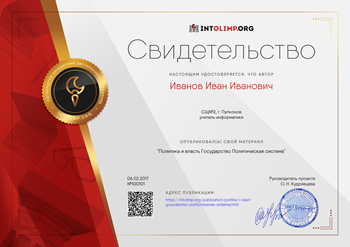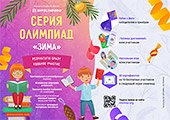| Unit of a long term plan 2 | School: Pavlovskaya secondary school | |
| Date: 23.07.2017 | Teacher name: Shepel Artyom Andreyevich | |
| CLASS: 5 | Number present: 7 | Absent: 0 |
| Lesson title | Animals | |
| Learning objectives(s) that this lesson is contributing to (link to the Subject programme) | 5.C4 evaluate and respond constructively to feedback from others; 5.UE9 use simple present and simple past regular and irregular forms to describe routines, habits and states on a limited range of familiar general and curricular topics; 5.R6 recognize the attitude or opinion of the writer in short texts on a limited range of general and curricular topics; 5.R4 read with some support a limited range of short fiction and non-fiction texts. | |
| Lesson objectives | All pupils will be able to describe the animal by simple sentences; Most pupils will be able to understand the text “Save the animals” and can answer the questions Some pupils will be able to use present simple and discuss the problems concerning the animals from “Red book”, help others to understand the topic in groups. | |
| Assessment criteria | Understand the general ideas of text “Save our animals”; Describe animals using present simple; Can find visual different between carnivorous and herbivorous animals and say about it using active form of present simple; | |
| Values links | Animals’ protection; Love to animals. | |
| Cross-curricular links | Biology, Geography | |
| Previous learning | Countable and uncountable nouns | |
| Plan | ||
| Planned timings | Planned activities (replace the notes below with your planned activities) | Resources |
| Start 1-5 min. | Input strategy. After greetings teacher shows the video and asks learners to guess what the lesson will be about. Then discusses the aims and assessment criteria for the lesson. Warm-up. The animals live on different areas. Teacher gives learners sheets of paper with the words of song, and ask learners sing song together about animals’ homes. | “Mammals. Educational video for kids” https://youtu.be/hGonwMTPV6g board
“Animals homesong” https://youtu.be/4Blw7Pg8xws
|
| Middle 6-42 min. | Pre-reading The teacher invites students to answer questions: 1.Is the blue whale endangered animal? 2.Are the birds mammal? 3.Are the bears endangered animals? 4.Are the snakes insect? Reading Class is divided into groups using the game Read the text: “Save our animals” From year to year the interest to rare endangered animals grows up. Especially rare types of animals deserve great of attention and careful attitude. Today the most well-known species of endangered animals, which are under the threat of complete disappearance, compute a blue whale, a Floridian panther, an arctic bear, a mountain gorilla, a tiger and a giant panda. Animals disappear as a result of people`s influence on the life. People involuntarily take away their small brothers` natural places of habitation, theirs fodder sites, cut down forests, cultivate deserts, contaminate seas and atmosphere. As a consequence animals are exterminated as fast as by means of a gun, poison, traps. Post-reading One learner from each group comes to the blackboard and choose one of the pictures and they must ask questions from other learners. The Venn diagram
Peer assessment. Watching video. Teacher’s questioning differentiation (Bloom’s Taxonomy) After watching the video, students try to describe the animal, which the teacher offers them using the present simple After each group offers a description of the animal and its area. TPR. “Running drawing” Now the students in the group choose the artist. He will have to run out, read the word, then draw this animal. The rest guess the animal, and write down the first letter of its name. Collecting one letter will get the word. Formative assessment with different task. Change the tense I each of the following sentences. Use the tense given in brackets. Descriptor A learner: changes the tense in each of the sentences; Uses the tense given in brackets correctly. The high- motivated pupils must do 5-6 sentences. The middle motivated learners must do 3-4 sentences. The low motivated learners must do 1-2 sentences |
Text
Board
https://youtu.be/FLLHsbe8HYM
Cards with name of animals |
| End 43-45 min. | Reflection . Ranking Students are encouraged to rank with the help of ranking line what they have learned more or less from the proposed statements
Summarizing | Stickers with ranking line |
| Additional information | ||
| Differentiation – how do you plan to give more support? How do you plan to challenge | Formative assessment – how are you planning to check learners’ learning? | Health and safety check |
| 1)After watching video answering questions (33-35 min.) 2)Psychological differentiation (audial, visuals, kinesthetic) during the lesson; 3) different support during the lesson. | 1)Through observation; 2) peer assessment in groups. | 1)TPR (36-39 min.) 2) video (2:40 min) |
| Reflection Were the lesson objectives\learning objectives realistic? Did all the learners achieve the lesson objectives\learning objectives? If not, why? Did my planned differentiation work well? Did I stick to timings? What changes did I make from my plan and why? | Use the space below to reflect on your lesson. Answer the most relevant questions from the box on the left about your lesson | |
|
|
| |
| Summary evaluation What two things went really well (consider both teaching and learning)? 1
2
What two things would have improved the lesson (consider both teaching and learning)? 1
2
What have I learned from this lesson about the class or individuals that will inform my next lesson?
| ||








